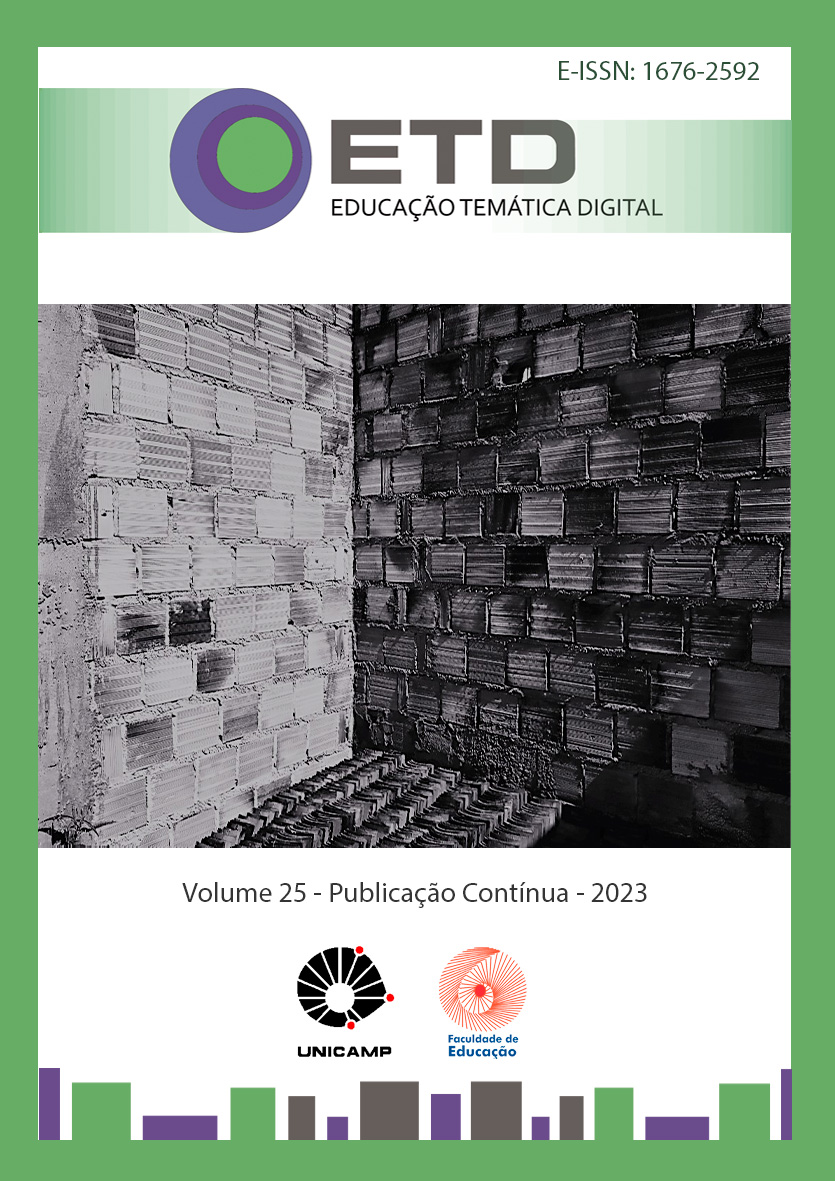Resumo
Este trabalho teve como objetivo explorar a efetividade do uso de uma rede social como recurso de ensino-aprendizagem complementar ao ambiente virtual de aprendizagem (AVA) institucional, tradicionalmente empregado em cursos de diversos níveis na modalidade Ensino à Distância. Para isso, foi realizado um estudo de caso com duas disciplinas de graduação oferecidas pela Universidade ZZZZ: Cálculo I e Teoria da Literatura. O estudo de caso partiu da criação e gerenciamento de um perfil na rede social Instagram para cada uma dessas disciplinas durante todo o seu período de oferecimento no primeiro bimestre de 2021. Nesse período, foram coletados dados quantitativos e qualitativos a respeito do uso realizado pelos estudantes. Os resultados obtidos evidenciam aceitação e entusiasmo dos estudantes em relação à rede social como ferramenta de apoio complementar de baixa complexidade de utilização, bem como indicam similaridade nos níveis de engajamento dos alunos das duas disciplinas. Esses resultados permitem vislumbrar novas possibilidades de interação orgânica dos estudantes com os conteúdos formalmente expostos no ambiente virtual de aprendizagem.
Referências
BUNCE, Diane M.; FLENS, Elizabeth A.; NEILES, Kelly Y. How long can students pay attention in class? A study of student attention decline using clickers. Journal of Chemical Education, v. 87, n. 12, p. 1438-1443, 2010.
DUBOVI, Ilana; TABAK, Iris. An empirical analysis of knowledge co-construction in YouTube comments. Computers & Education, v. 156, p. 103939, out. 2020. Elsevier BV. http://dx.doi.org/10.1016/j.compedu.2020.103939 .
GASQUE, Kelley Cristine Gonçalves Dias. Internet, mídias sociais e as unidades de informação. Brazilian Journal of Information Science: research trends, v. 10, n. 2, 1 nov. 2016. Disponível em: https://revistas.marilia.unesp.br/index.php/bjis/article/view/5929 . Acesso em junho de 2021.
JUNIOR, Luiz Carlos Leal; DE ANDRADE, Cecília Pereira; MARTINS, Egídio Rodrigues; DA SILVA, Lilian Esquinelato. Ensino de matemática através de videoaulas: um olhar pela teoria da atenção. Tangram - Revista de Educação Matemática. Dourados, MS, v. 1, n. 3, pp. 40-63, 2018. ISSN: 2595-0967.
LIU, Su-Houn; LIAO, Hsiu-Li; PRATT, Jean A. Impact of media richness and flow on e-learning technology acceptance. Computers & Education, v. 52, n. 3, pp. 599-607, abr. 2009. Elsevier BV. DOI http://dx.doi.org/10.1016/j.compedu.2008.11.002 .
MARTINO, Luis Mauro Sá. Teoria das Mídias Digitais: linguagens, ambientes e rede. 2. ed. Petrópolis: Vozes, 2015.
MCLOUGHLIN, Catherine; LEE, Mark J W. The three p’s of pedagogy for the networked society: personalization, participation, and productivity. International Journal of Teaching and Learning in Higher Education, v. 20, n. 1, pp. 10-27, 2008. Disponível em: http://www.isetl.org/ijtlhe/ . Acesso em junho de 2021.
MOORE, M.G. Editorial: Distance Education Theory. American Journal of Distance Education, v. 5, n. 3, p. 1-6, 1991.
MOORE, M.G. Independent study. In: BOYD, R.; J.W. APPS AND ASSOCIATES (org.). Redefining the discipline of adult education. São Francisco: Jossey-Bass, 1980. p. 16-31.
MOORE, M.G. Learner autonomy: the second dimension of independent learning. Convergence, v. 2, p. 76-88, 1972.
OLNEY, Andrew M. et al. Attention in educational contexts: the role of the learning task in guiding attention. The Handbook of Attention. The MIT Press, 2015.
PEREIRA, Jocimario Alves; DA SILVA, Jairo Ferreira Jr.; DA SILVA, Everton Vieira. Instagram como ferramenta de aprendizagem colaborativa aplicada ao ensino de Química. Revista Debates em Ensino de Química, v. 5, n. 1, p. 119-131, 2019.
RABELLO, Cíntia Regina Lacerda. Interação e aprendizagem em Sites de Redes Sociais: uma análise a partir das concepções sócio-históricas de Vygotsky e Bakhtin. Revista Brasileira de Linguística Aplicada, v. 15, n. 3, pp. 735-760, set. 2015. FapUNIFESP (SciELO). http://dx.doi.org/10.1590/1984-639820156288 .
SCARDAMALIA, Marlene. Collective Cognitive Responsibility for the Advancement of Knowledge. In: B. SMITH (org.). Liberal education in a knowledge society. Open Court, 2002. p. 67-68.
SHERER, Pamela; SHEA, Timothy. Using online video to support student learning and engagement. College Teaching, v. 59, n. 2, p. 56-59, 2011.
SZPUNAR, Karl K.; KHAN, Novall Y.; SCHACTER, Daniel L. Interpolated memory tests reduce mind wandering and improve learning of online lectures. Proceedings of the National Academy of Sciences of the United States of America, v. 110, n. 16, p. 6313-6317, 2013.
YOUNG, Mark S.; ROBINSON, Stephanie; ALBERTS, Phil. Students pay attention!: Combating the vigilance decrement to improve learning during lectures. Active Learning in Higher Education, v. 10, n. 1, p. 41-55, 2009.

Este trabalho está licenciado sob uma licença Creative Commons Attribution-NonCommercial-NoDerivatives 4.0 International License.
Copyright (c) 2023 ETD - Educação Temática Digital


